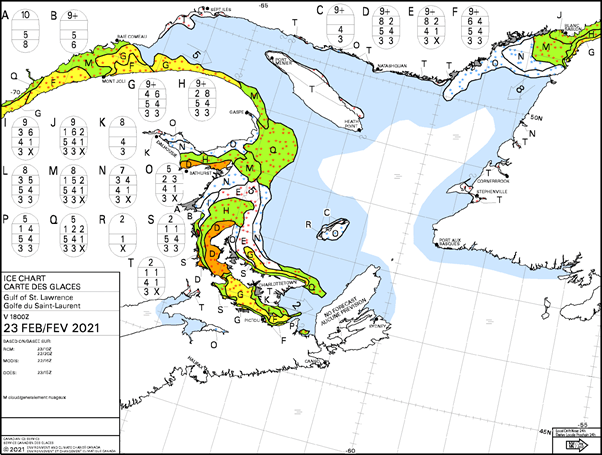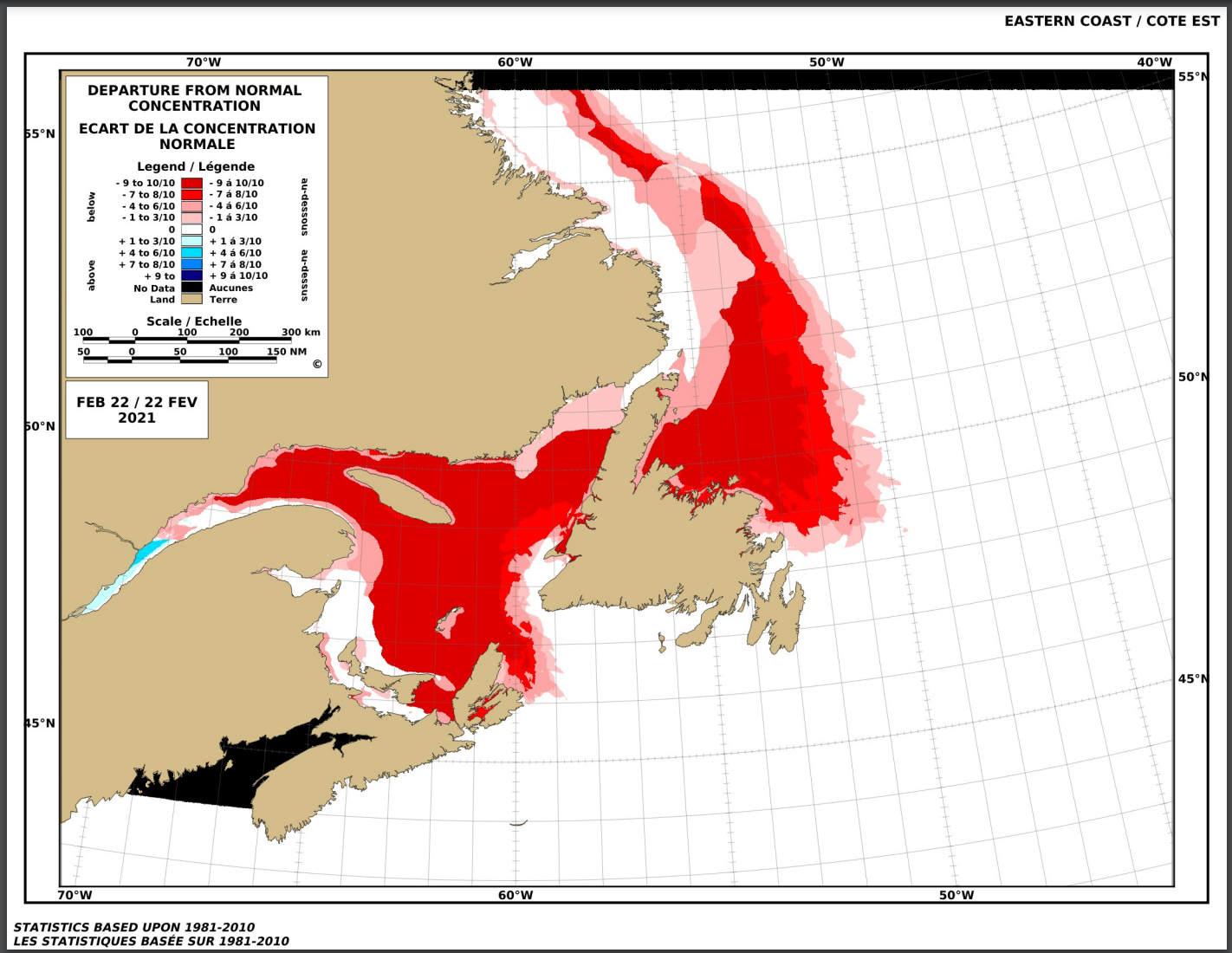Ice concentrations in different parts of the world are important for navigators and provide valuable indicators for climate change predictions. We recently posted an article reporting that ice conditions in the Baltic Sea had returned closer to historic norms after a significant period below.
In contrast, on the opposite side of the Atlantic, the Gulf of St. Lawrence is experiencing very low levels of sea ice concentration and could set a new monthly near all time low record for February according to Fisheries and Oceans Canada. The Canadian Ice Service reports sea ice is at its lowest point in the season in more than 50 years. Water temperatures in the region are now at their highest level in over a century; since scientists started keeping records in 1915.
This ice deficit is due to a warm January where average temperatures were 3-6 C above normal. Except for small concentrations along the western coast of the Gulf and the Strait of Belle Isle (representing 1% ice cover) the area has been ice free since February 23.

During a typical winter we would expect to see the waters of this region largely covered by ice. The below chart depicts the departure from the climatological normal ice concentration and shows how far from normal this year has been for ice in the area. The concentration of ice over a large portion of the Gulf of Saint Lawrence is nearly 90 percent less than that of a typical year.

This below average departure is not limited to the semi-enclosed Gulf of Saint Lawrence, but also extends to the east of Newfoundland and into the open North Atlantic. Ice coverage through late February has not been above normal since the winter of 2013/14, and even that year was an anomaly in nearly a decade of below average ice totals.
While this is helpful for ships transiting the Gulf, as they do not require the use of an ice pilot or need an ice breaker escort, the lack of sea ice is a concern and symptom of a warming Gulf of St. Lawrence and climate change.
Climate Change (CC) is a normal part of our evolving planet but anthropogenic CC means we will continue to observe abnormal events with increasing frequency as the planet warms further and more energy is released into the atmosphere. Challenging times for forecasters that requires a close continuous monitoring of events – not just globally but regionally.
Stay connected and safe.
Co-authored by John DeFluri. John is from Mechanicsburg, Pennsylvania and obtained a Bachelor’s of Science degree in Meteorology and Atmospheric Science from The Pennsylvania State University. He has been with FleetWeather since December of 2018 and is currently a Marine Router on the Whales watch.